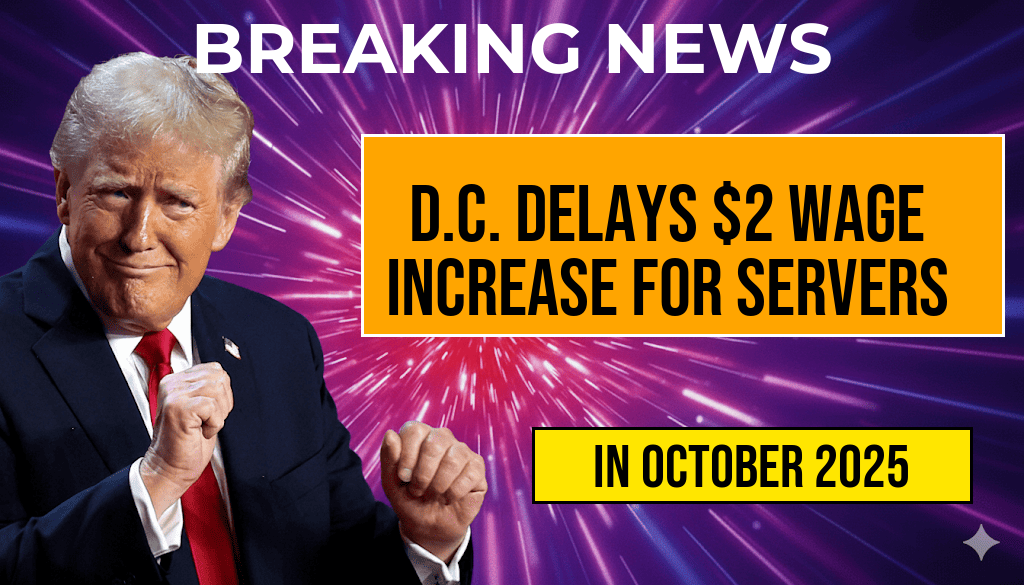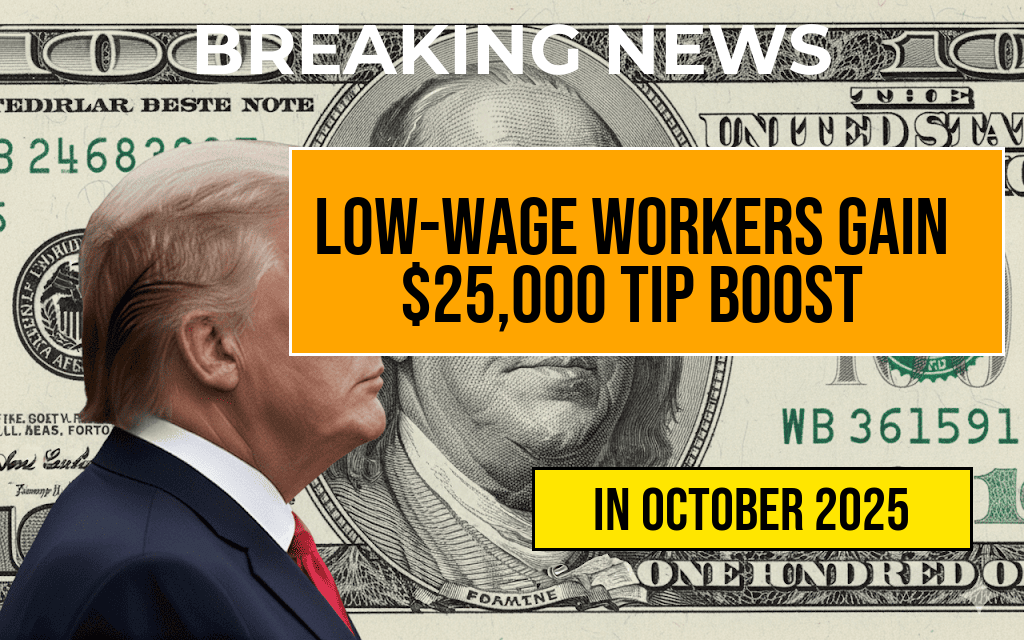The recent implementation of former President Donald Trump’s “No Tax on Tips” policy has stirred considerable interest among service industry workers across the United States. This initiative allows eligible employees to deduct up to $25,000 from their taxable income based on tips received, potentially increasing their take-home pay significantly. For many workers, particularly those in hospitality and personal services, this change could translate to an additional $1,300 in their wallets annually. As discussions around tax reform and worker compensation continue, understanding the implications of this policy becomes increasingly important.
Understanding the ‘No Tax on Tips’ Policy
Under the new tax policy, employees who earn tips can now deduct a substantial portion of their income from taxable earnings. This move is aimed at alleviating the tax burden on workers who heavily rely on tips, such as waitstaff, bartenders, and hairdressers. Previously, these workers faced a challenging tax landscape where tips were subject to taxation, often resulting in higher overall tax liabilities.
Who Benefits from This Policy?
Service industry workers, particularly those employed in restaurants and bars, are the primary beneficiaries of the “No Tax on Tips” policy. The following groups stand to gain the most:
- Restaurant Staff: Waiters and waitresses often receive a large portion of their income from tips.
- Bartenders: Similar to restaurant staff, bartenders depend on tips to supplement their wages.
- Personal Service Workers: Hairdressers, nail technicians, and taxi drivers are also eligible for these tax deductions.
Potential Financial Impact
The implications of this policy could be significant for many workers. By allowing up to $25,000 in deductions, the potential increase in take-home pay might reach approximately $1,300 for those who qualify. This is particularly relevant for individuals who report high tips throughout the year.
| Annual Tips Received | Tax Rate | Tax Savings |
|---|---|---|
| $25,000 | 10% | $2,500 |
| $50,000 | 12% | $3,000 |
| $75,000 | 22% | $5,500 |
How to Claim the Deduction
Workers interested in benefiting from this policy must ensure they accurately report their tips. To claim the deduction, they should:
- Maintain detailed records of all tips received.
- File their tax returns using the appropriate forms that reflect their tip income.
- Consult with a tax professional to navigate any complexities involved in claiming the deduction.
Critics and Concerns
Despite its potential benefits, the policy has drawn criticism from various sectors. Some economists argue that the reform could lead to complications in tax compliance and enforcement. Critics also express concerns about the fairness of tax structures, suggesting that such deductions primarily benefit higher-income earners in the service industry.
Future of Tax Reforms
The “No Tax on Tips” policy is part of a larger discussion on tax reforms in the United States. As the government continues to explore ways to support low- and middle-income earners, this initiative may serve as a template for future reforms. Stakeholders from various sectors are closely monitoring its impact and the response from both workers and tax authorities.
For ongoing updates and more information about this policy, you can visit Forbes or refer to Wikipedia for a comprehensive overview of taxation policies in the U.S.
Frequently Asked Questions
What is Trump’s ‘No Tax on Tips’ policy?
Trump’s ‘No Tax on Tips’ policy allows workers in the service industry to detract their tips from taxable income, potentially leading to significant savings on their income tax.
How much can workers deduct under this policy?
Workers can deduct up to $25,000 from their taxable income, which can result in a notable increase in their take-home pay.
What impact could this policy have on my take-home pay?
This policy could result in an estimated $1,300 increase in your annual take-home pay, depending on your total tips and income.
Who benefits the most from the ‘No Tax on Tips’ policy?
Workers in the service industry, such as waitstaff, bartenders, and taxi drivers, are the primary beneficiaries of this policy, as they often rely on tips for a significant portion of their income.
Are there any limitations to this deduction?
Yes, while the policy allows for a deduction of tips, it may be subject to specific eligibility criteria and regulations, which could vary by state and individual circumstances.






